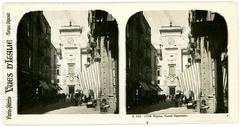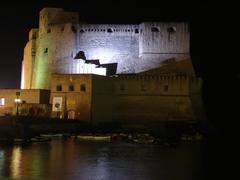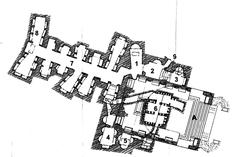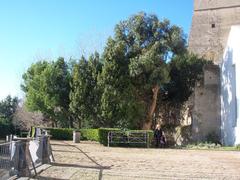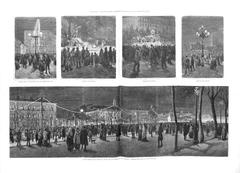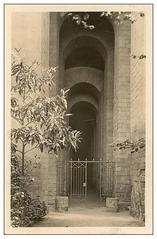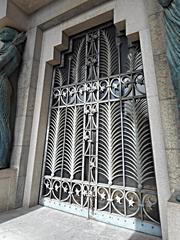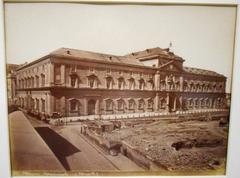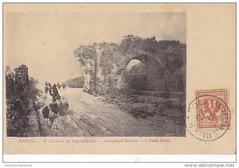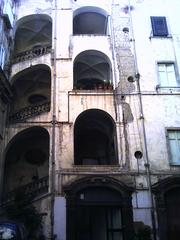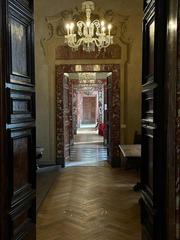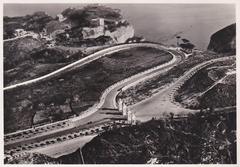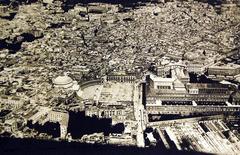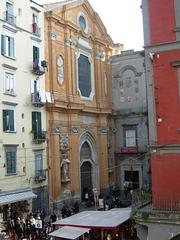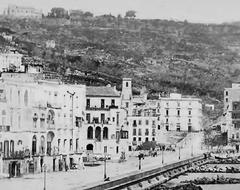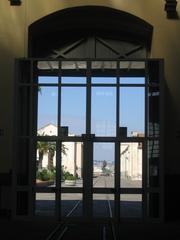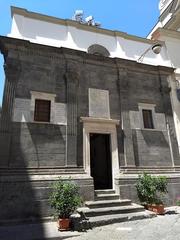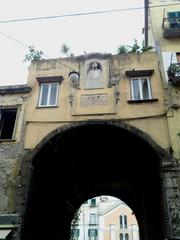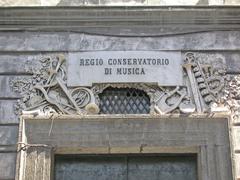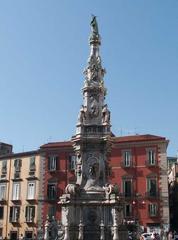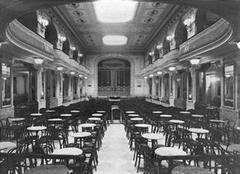Visiting the Catacombs of San Gennaro: Tickets, Hours, and Historical Insights
Date: 17/07/2024
Introduction
The Catacombs of San Gennaro in Naples, Italy, stand as one of the most intriguing and historically significant underground burial sites in the world. Dating back to the 2nd century AD, these catacombs offer a unique glimpse into early Christian burial practices and the evolution of Christian art and architecture. Named after Saint Januarius (San Gennaro), the patron saint of Naples, the catacombs have been a focal point of religious veneration and pilgrimage for centuries (source).
Today, managed by the Fondazione di Comunità San Gennaro, the catacombs continue to attract visitors from around the globe, offering guided tours that explore their rich historical, cultural, and religious significance. This comprehensive guide aims to provide all the necessary information for a memorable visit, including historical background, practical visitor information, and tips for exploring nearby attractions.
Historical Background
Origins and Early Use
The Catacombs of San Gennaro date back to the 2nd century AD and initially served as burial sites for early Christians. The catacombs are named after Saint Januarius (San Gennaro), the patron saint of Naples, whose remains were interred here in the 5th century (source).
Architectural Features
The catacombs are divided into two levels: the upper catacomb, characterized by large, open spaces and wide corridors, and the lower catacomb, which features narrow passageways and smaller burial chambers. Both levels are adorned with early Christian frescoes and mosaics, offering valuable insights into the religious and cultural practices of the time (source).
Significance of Saint Januarius
Saint Januarius, a bishop of Benevento, was martyred during the Diocletianic Persecution in 305 AD. His remains were initially buried in the Agro Marciano cemetery but were later transferred to the Catacombs of San Gennaro. The presence of his relics made the catacombs a significant pilgrimage site (source).
Medieval and Renaissance Periods
During the medieval period, the catacombs continued to be an important religious site. In the 9th century, the remains of Saint Januarius were moved to the Cathedral of Naples, but the catacombs retained their significance. The catacombs underwent several renovations and expansions during the Renaissance, reflecting the continued devotion to Saint Januarius and other saints interred there (source).
Modern Rediscovery and Preservation
The catacombs fell into disuse and were largely forgotten until their rediscovery in the 19th century. Archaeological excavations and restoration efforts have since been undertaken to preserve the catacombs and their valuable historical and artistic heritage. Today, the Catacombs of San Gennaro are managed by the Fondazione di Comunità San Gennaro, which oversees their conservation and promotes their historical and cultural significance (source).
Artistic and Cultural Heritage
The catacombs are renowned for their early Christian art, including frescoes, mosaics, and sculptures. These artworks provide valuable insights into the religious beliefs and practices of early Christians. Notable examples include the fresco of the Good Shepherd, which depicts Christ as a shepherd, and the fresco of Saint Januarius, which portrays the saint in a bishop’s attire. The catacombs also contain numerous inscriptions and epitaphs, which offer glimpses into the lives and beliefs of the individuals buried there (source).
Visitor Experience
Practical Information for Visitors
- Location: The Catacombs of San Gennaro are located in the Rione Sanità district of Naples, near the Basilica of San Gennaro extra Moenia.
- Opening Hours: The catacombs are open daily from 10:00 AM to 5:00 PM. It is recommended to check the official website for any changes in opening hours or special closures.
- Tickets: Tickets can be purchased online or at the entrance. Discounts are available for students, seniors, and groups. Guided tours are included in the ticket price.
- Accessibility: The catacombs are partially accessible to individuals with disabilities. It is advisable to contact the site in advance to arrange for any special accommodations.
- Photography: Photography is allowed in most areas of the catacombs, but the use of flash and tripods is prohibited to protect the delicate artworks.
Nearby Attractions
Visitors to the Catacombs of San Gennaro can also explore other nearby attractions, including:
- Basilica of San Gennaro extra Moenia: This basilica, located adjacent to the catacombs, is one of the oldest churches in Naples and features beautiful frescoes and mosaics.
- Catacombs of San Gaudioso: Another significant catacomb site in Naples, known for its unique frescoes and burial practices.
- National Archaeological Museum of Naples: One of the most important archaeological museums in the world, housing a vast collection of artifacts from ancient Greece, Rome, and Egypt (source).
Tips for a Memorable Visit
- Plan Ahead: It is advisable to book tickets in advance, especially during peak tourist seasons, to avoid long queues.
- Dress Appropriately: The catacombs are underground and can be cool, even in summer. Wearing comfortable shoes and bringing a light jacket is recommended.
- Respect the Site: The catacombs are a sacred and historical site. Visitors are expected to behave respectfully and follow the guidelines provided by the tour guides.
- Take Your Time: The catacombs are extensive, and there is much to see and learn. Allow sufficient time to explore the site thoroughly and appreciate its historical and artistic significance.
FAQ Section
- What are the visiting hours for the Catacombs of San Gennaro? The catacombs are open daily from 10:00 AM to 5:00 PM. It is recommended to check the official website for any changes in opening hours or special closures.
- How much are tickets for the Catacombs of San Gennaro? Tickets can be purchased online or at the entrance. Discounts are available for students, seniors, and groups. Guided tours are included in the ticket price.
- Is photography allowed inside the catacombs? Yes, photography is allowed in most areas of the catacombs, but the use of flash and tripods is prohibited.
Conclusion
The Catacombs of San Gennaro offer a rare and immersive journey into the early Christian history and culture of Naples. From the intricate frescoes and mosaics to the burial chambers that have stood the test of time, the catacombs serve as a testament to the religious and artistic heritage of the early Christian community. Visiting this sacred site is not only an educational experience but also a spiritual one, providing a deeper understanding of the sacrifices and devotion of early Christians. Whether you are a history enthusiast, a pilgrim, or a curious traveler, the catacombs promise an unforgettable journey into the heart of Naples’ heritage (source).


